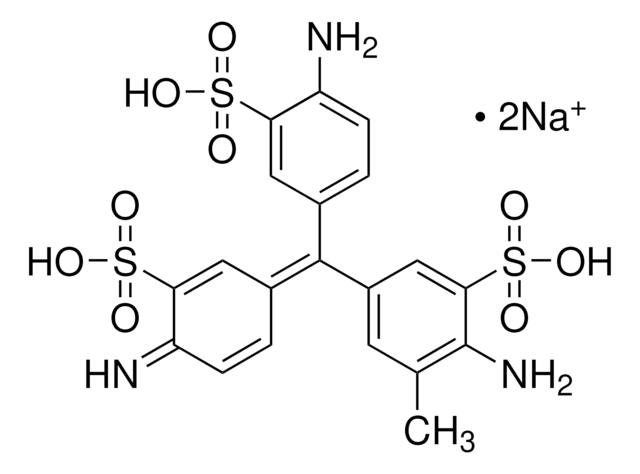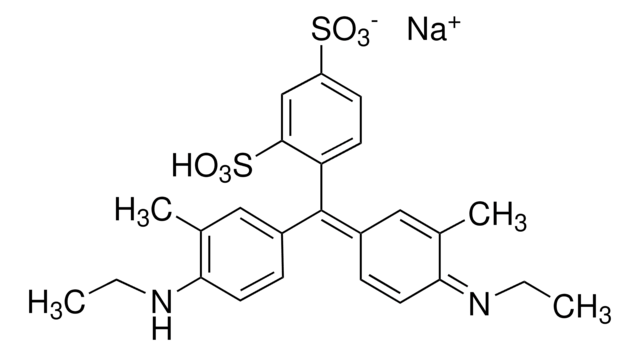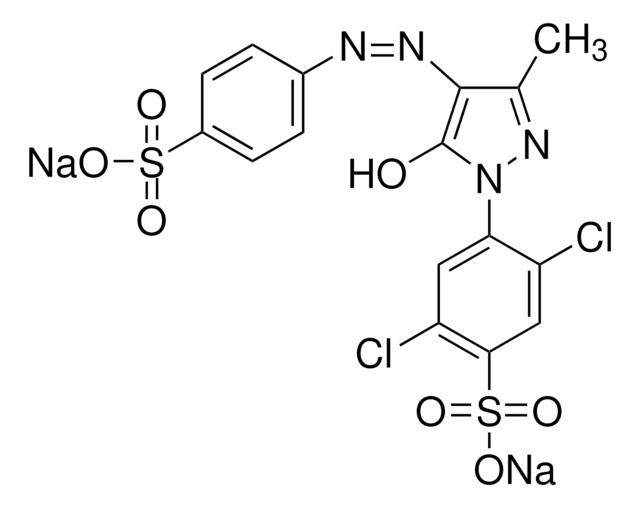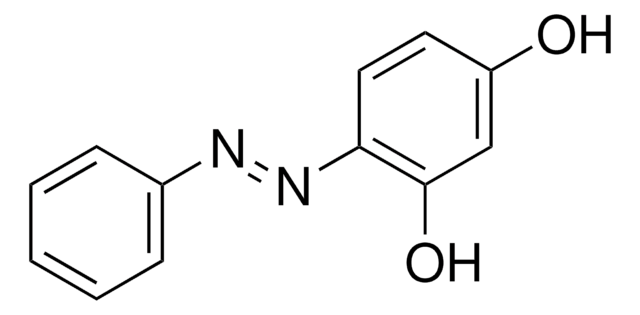861286
Orange G
certified by the Biological Stain Commission, Dye content 80 %
Sinônimo(s):
1-Phenylazo-2-naphthol-6,8-disulfonic acid disodium salt, 7-Hydroxy-8-phenylazo-1,3-naphthalenedisulfonic acid disodium salt, Acid Orange 10, Wool Orange 2G
About This Item
Produtos recomendados
grau
certified by the Biological Stain Commission
Nível de qualidade
Formulário
powder
composição
Dye content, 80%
técnica(s)
microbe id | staining: suitable
cor
orange to very dark orange, and Red to Very Dark Red and Orange-Red and Red-Orange and Dark Red-Orange
solubilidade
H2O: 1 mg/mL
λmax
475 nm
ε (coeficiente de extinção)
≥10000 at 329-331 nm in H2O
≥17000 at 473-479 nm in H2O
≥20500 at 246-250 nm in H2O
aplicação(ões)
diagnostic assay manufacturing
hematology
histology
temperatura de armazenamento
room temp
cadeia de caracteres SMILES
[Na+].[Na+].Oc1ccc2cc(cc(c2c1\N=N\c3ccccc3)S([O-])(=O)=O)S([O-])(=O)=O
InChI
1S/C16H12N2O7S2.2Na/c19-13-7-6-10-8-12(26(20,21)22)9-14(27(23,24)25)15(10)16(13)18-17-11-4-2-1-3-5-11;;/h1-9,19H,(H,20,21,22)(H,23,24,25);;/q;2*+1/p-2/b18-17+;;
chave InChI
HSXUHWZMNJHFRV-QIKYXUGXSA-L
Procurando produtos similares? Visita Guia de comparação de produtos
Aplicação
Ações bioquímicas/fisiológicas
Código de classe de armazenamento
11 - Combustible Solids
Classe de risco de água (WGK)
WGK 3
Ponto de fulgor (°F)
Not applicable
Ponto de fulgor (°C)
Not applicable
Equipamento de proteção individual
Eyeshields, Gloves, type N95 (US)
Escolha uma das versões mais recentes:
Já possui este produto?
Encontre a documentação dos produtos que você adquiriu recentemente na biblioteca de documentos.
Os clientes também visualizaram
Nossa equipe de cientistas tem experiência em todas as áreas de pesquisa, incluindo Life Sciences, ciência de materiais, síntese química, cromatografia, química analítica e muitas outras.
Entre em contato com a assistência técnica








